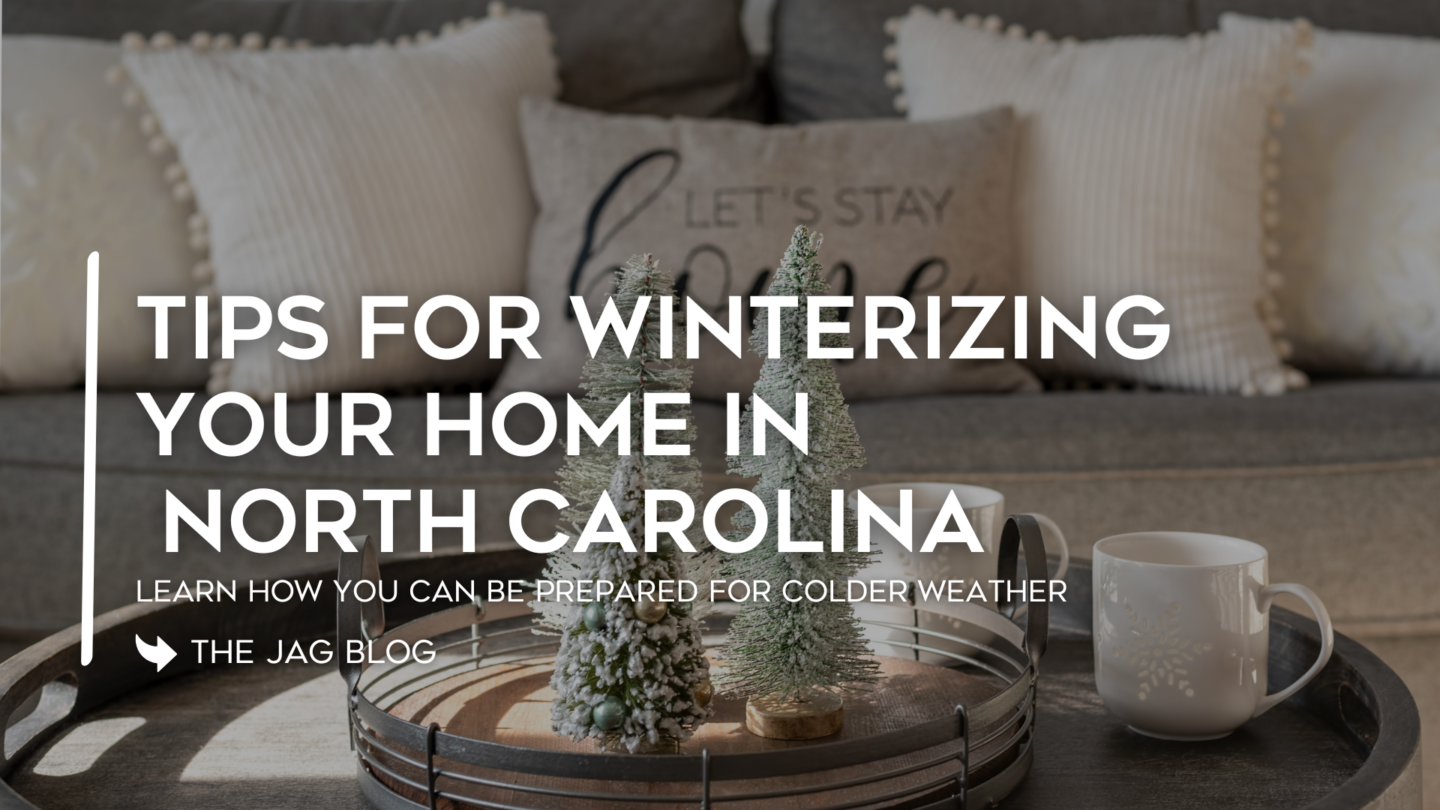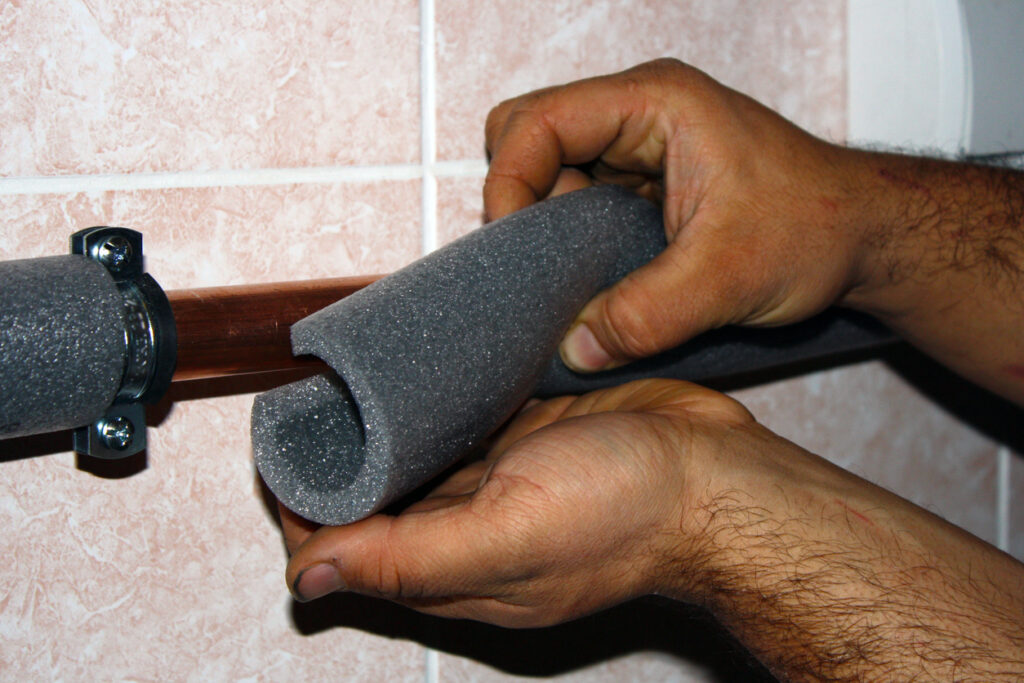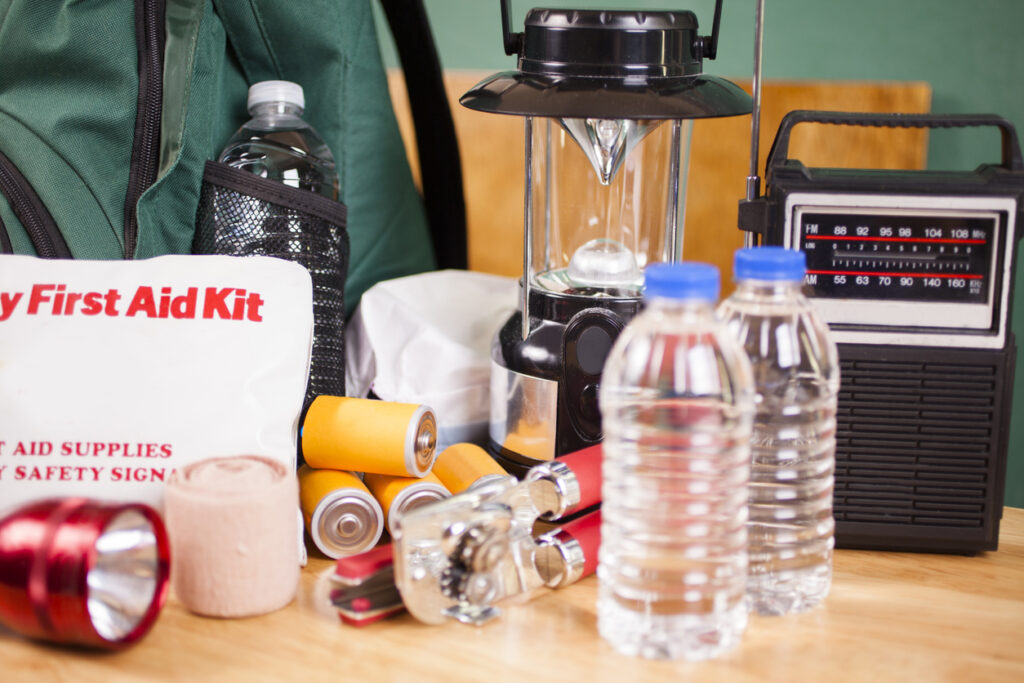Tips for winterizing a home in North Carolina

One of the things people love about the state of North Carolina is the weather. Known for its moderate climate, its hot summers and mild winters make it a favorite for anyone escaping from the snow of the northern states. Despite those mild winters, the Triangle area can still experience cold snaps, icy conditions, and a once-in-a-while snowfall. And because of colder weather waves, it’s a great idea to start winterizing a home in North Carolina before it hits.
Early preparation can protect your home, save energy, and reduce your overall costs. The following tips will help you be ready for whatever weather hits this winter.
Inspect and seal drafts
According to Energy Star, air leakage in your home accounts for between 25 and 40 percent of the energy you use to heat and cool your home. It can also reduce how effective the rest of your home’s energy-efficiency efforts are. In other words, even with quality insulation and Energy Star windows and doors, your home may have higher energy bills due to drafts. Fortunately, the solution is as easy as hunting for drafts and sealing them.
Start by looking for problem areas in your home. This typically includes windows, doors, attic spaces, and crawl spaces. Once you’ve identified these spots, start the sealing process. Use weather stripping or caulk to seal gaps around doors and windows to stop air from moving both inside and out. Apply foam insulation around electrical outlets and light switches, which can be hidden spaces for air to leak. Install draft guards or door sweeps on the base of your exterior doors to keep air and dirt out. In North Carolina, performing these tasks can help you save as much as 17 percent on your yearly utility bill.


Insulate and protect pipes
When the temperatures drop to freezing, homes are more at risk of having pipes freeze. Despite those mild winters in North Carolina, temperatures can freeze, leading to burst pipes if you aren’t careful. Burst pipes are one of the common causes of property damage in the winter, which is why it’s necessary to keep pipes from freezing. Because typical North Carolina homes don’t have basements, it’s important to deal with pipes in crawl spaces, as well as in attics.
Start by looking for any pipes that may be exposed to cold weather. For minimal costs, you can add insulation to pipes to keep them from freezing. If you haven’t had a chance to insulate pipes as the weather starts to freeze, keep the following simple tips in mind. Leave faucets dripping on freezing nights to prevent pressure build-up. Keep your garage doors closed, but open your cabinets inside to keep warm air circulating. And if your pipes do freeze, use a hair dryer or a small heater to help them thaw. The more proactive you can be by winterizing a home in North Carolina, the better you’ll be when an unexpected freeze comes along.
Maintain your HVAC system
Regular HVAC maintenance is incredibly important for keeping your system efficient and maintaining comfortable indoor temperatures. You should have your HVAC system checked by professionals every spring and fall to make sure it’s running its best. Start by scheduling a professional tune-up to make sure the system is operating at maximum efficiency.
Part of this maintenance will include a chance of air filters before winter begins. Be sure to check those air filters during the season, too. If any major parts need to be fixed or replaced, do so before the cold weather sets in for good. Check the vents in each room to make sure they’re clear and can move as much air as possible. And if you’re serious about maximizing efficiency, consider upgrading your thermostat to a programmable system that optimizes your home and can help you save as much as 10 percent on your yearly utility bills. Your HVAC is a major part of winterizing a home in North Carolina.
Take care of your fireplace and chimney
If you have a wood-burning fireplace in your home, you may want to start using your fireplace as soon as the weather cools. But before you get started, you need to make sure it’s safe to use. You need regular inspections to make sure your fireplace is free of structural damage and blockages like bird nests or debris. Make sure the damper is functioning properly so heat isn’t lost when the fireplace isn’t being used. And if you don’t have a chimney cap to keep pests out, install one. Contact a chimney sweep to clean the chimney before you start burning wood.
Even if you don’t have a wood-burning fireplace, it’s still smart to have gas fireplaces checked out to make sure there are no gas leaks. You may even want to consider switching your wood-burning fireplace for a more economical gas or electric option. These eco-friendly solutions for fireplaces can also help prevent warm air from escaping from your home.
Prep the outside of your home
Take the time to winterize the outside of your home, too. Start by disconnecting and storing your hoses to keep water from freezing and damaging spigots. Be sure to clean away any debris, such as leaves or mulch, from your foundation. Debris tends to collect ice or snow and can damage your home’s foundation. Also, clean out your gutters, which often collect leaves and pine needles, leading to clogs. These blockages can cause gutters to get backed up and ultimately lead to roof damage. Downspouts should carry water away from the foundation to avoid erosion and water seepage.
In addition, check your roof for damage that may have occurred over the summer. If you have loose or missing shingles, repair them, as they could cause leaks if there is any ice or snow buildup during the winter. Be sure to check the insulation in your attic, too. This will help prevent heat from escaping through your roof, reducing energy costs.
Prepare for storms
Get ready for any winter storms by keeping an emergency kit on hand. Pick up salt or sand to keep your sidewalks and stairs free of ice. You may even want to stock up on emergency supplies in case of storms. Keep flashlights, batteries, candles, and non-perishable foods in case of power outages, which may be more likely in North Carolina if there are icy conditions.
Consider hiring tree trimmers to trim back branches that may be close to your home, too. This can help prevent damage during snow and ice storms. Loose branches can fall, causing damage to your home that could be prevented. Remove them before they become a problem.


Swap out batteries
One final note is to use the changing seasons as a reminder to switch batteries throughout your home. Clocks, smoke detectors, carbon monoxide detectors, and even thermostats should at least be checked and replaced when needed.
Keep this on your to-do list as the seasons change so your home and family stay safe throughout the year.
Final notes
Winterizing a home in North Carolina is as simple as setting a reminder and repeating it every year. Remember, all of the efforts you put in will protect your home from cold weather damage, improve your energy efficiency, and help you save on your utility costs. Be proactive and start early to enjoy a comfortable and worry-free winter season.


